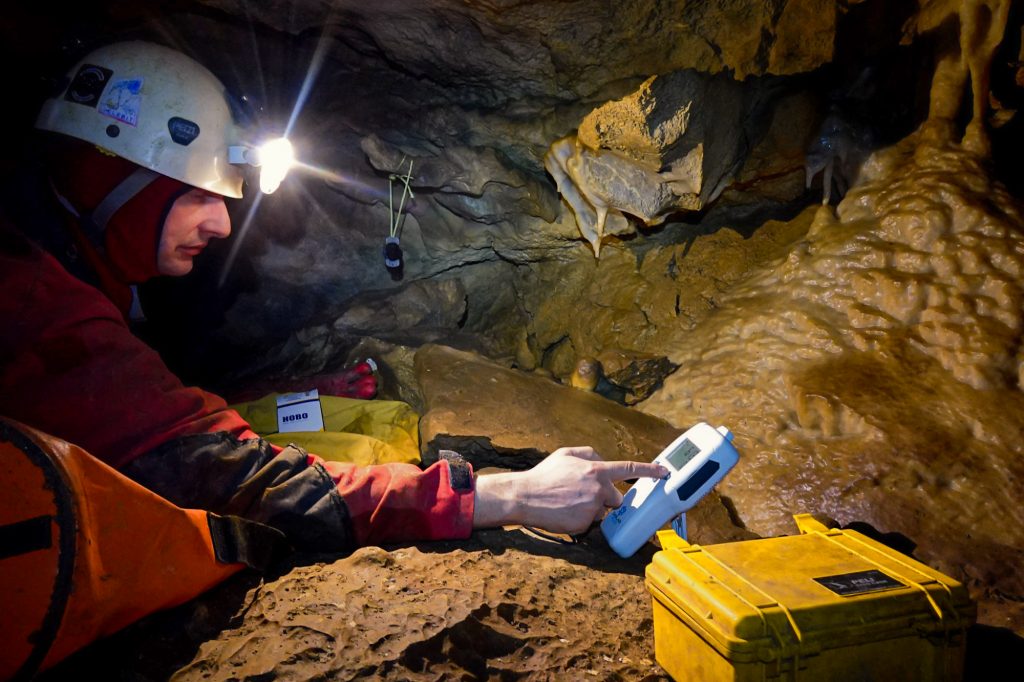Dalibor Paar
The Provala Cave is located in the Žumberak-Samoborsko Gorje Nature Park located in the western part of central Croatia, along the border with Slovenia, between the Kupa and Sava rivers. Large part of the Park is karst and fluviokarst relief.
The Provala Cave is a multi-level, branched cave with permanent stream where interaction between air and water component of the karst system can be closely followed. Cave was formed in tectonically disturbed and fractured carbonate rocks – Upper Cretaceous carbonate deposits (limestone and breccia). It was chosen as the location for the implementation of the CARDIKARST project since it is the longest cave in this area with a complex morphology. The length of the cave is 2110 m, and the depth is 55 m. Compared to other caves in our project, Provala has a vertical entrance.

Different morphological types of cave passages appear and intertwine in the cave, i.e. levels at different heights with respect to the surface. The cave is rich in autochthonous and allochthonous clastic sediments – silt, clay, sand and gravel. Accumulations of stone blocks are found in the entrance parts where cryofraction processes work. Speleothems are significantly present in different parts of the cave.
In the karst terrain of Žumberak Mt., the surface is poor in streams because most of the water moves through well karstified vadose zone. In the Provala cave, we access some of these paths, the lowest of which are constantly active flowing underground streams. In the higher levels we find distinct traces of fossil flows. The cave provides insight in al three hydrological zones: vadose, epiphreatic and phreatic.

Literature
Bočić, N., Buzjak, N. 2015: Speleomorphology of Dry Passage in Provala Cave (Croatia). Acta Carsologica, 27(2), DOI: 10.3986/ac.v27i2.500
Buzjak, N. 2002: Speleological phenomena in the Nature park “Žumberak-Samoborsko gorje”. Geoadria 7/1, 31-49, DOI: 10.15291/geoadria.64
Paar, D., Radolić, V., Lacković, D., Buzjak, N., Čop, A. & Bakšić, D. 2009: Radon concentration measurements on Mt. Velebit and Mt. Žumberak (Croatia). In: Gabrovšek, F. & Mihevc, A. (eds.) 17th International Karstological School “Classical Karst”. Postojna, IZRK ZRC SAZU, 78.
